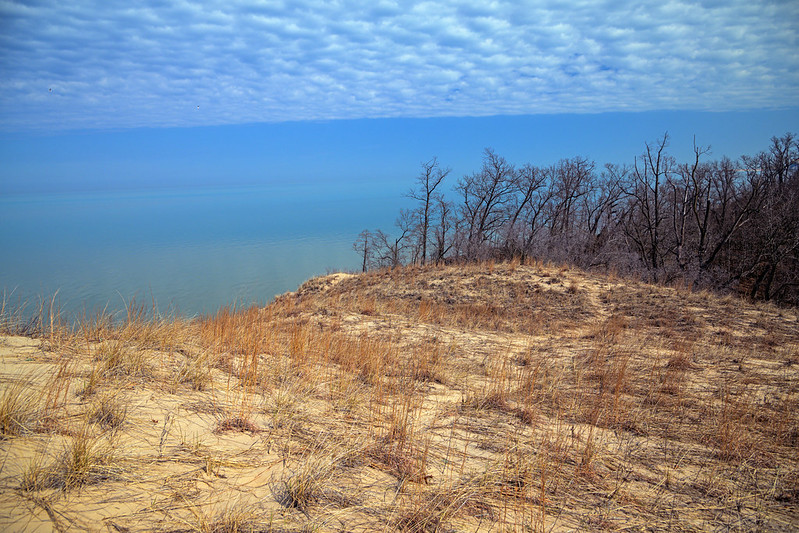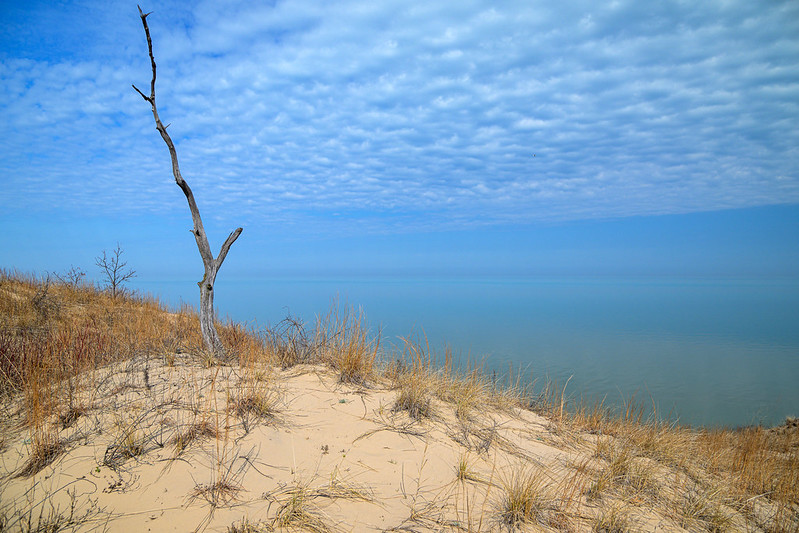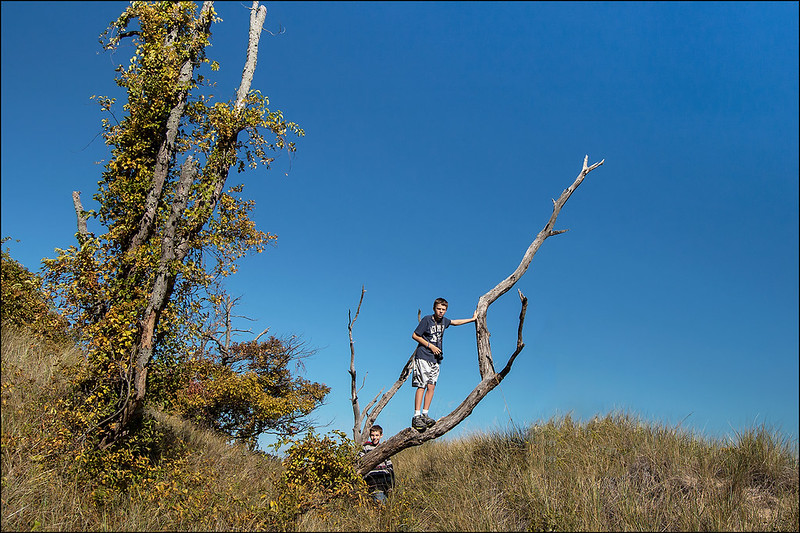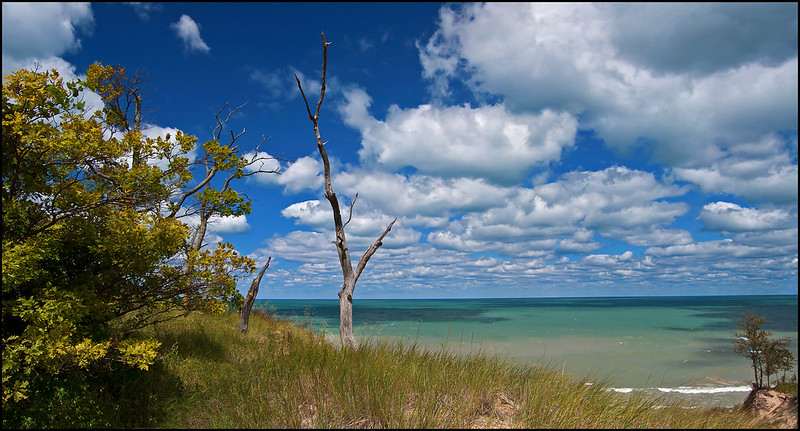
About 15 years ago, on a hike with my kids, we noticed a single tree on the vast grassland of the inner dunes. We named that tree "The Lonely Tree" because it looked so lonely in the middle of all the rolling hills. Over the next few weeks, we would visit the same trail and call attention to the lonely tree. Finally, we decided to try to get as close to the tree as possible, and looked for trails that headed in the general direction. After a bit, we made our way to a narrow, sandy trail about 100 feet behind the tree. This was about a mile walk from our original trail.
As soon as we arrived, my youngest son ran to the tree and gave it a long hug - he finally was able to greet the tree properly and make it feel a bit less lonely.
On the hike back to the main trail, the boys noticed another tree in middle of nowhere, this time it was an oak tree. This rather large oak had low branches, making it easy for them to climb up to get a great view of the surrounding dunes and woods. They could even see Lake Michigan from their high perch. This tree became known to us as the ladder tree, because the branches acted like a ladder.
As seen in the photo above, at 20 years old, and 6'-4", Dan still loves to climb the ladder tree.
Hiking through this area today, some 15 years later, I'm still reminded of these natural landmarks on the trail, and I can still hear the kids shouting out in excitement as they came into view. It's great to remember these details, even if only to see how they've changed in the last decade.














